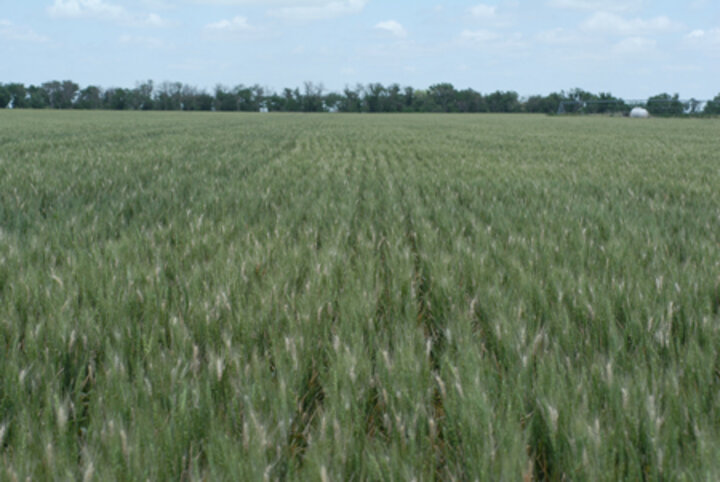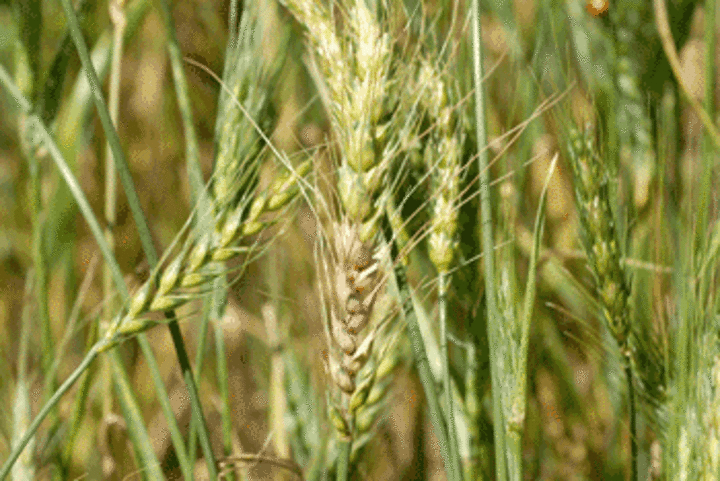
|

|
| Figure 1. Photo of white heads caused by scab in a wheat field in York County, June 11. | Figure 4. A section of a wheat field showing a severe epidemic of scab in York County, June 11. |

|
| Figure 2. Photo of white heads caused by scab in a wheat field in York County, June 11. |

|
| Figure 3. Bleaching can spread until the entire wheat head appears white. |
June 15, 2007
During the last two weeks there have been reports of bleached or white heads in wheat fields in south central and eastern Nebraska (Figure 1). A survey of wheat fields in Saline, Saunders, Holt and York counties from June 7 to June 11 revealed that these symptoms are caused mainly by Fusarium head blight, also known as head scab.
|
It survives in the soil or on stubble of host crops such as corn, wheat and grasses. Scab is more severe in reduced or no-till fields, especially when wheat follows corn.
Spores of the scab fungus are abundant, especially during wet weather, and are carried to wheat heads by air currents. Most infections occur during flowering because anthers and pollen serve as a food source for the fungus.
A distinctive symptom of the disease is premature bleaching of one or more spikelets (Figure 2) or the entire immature head. The bleaching can start anywhere on the head and then spread (Figure 3) until the entire head is bleached.
Bleached spikelets are sterile or contain shriveled and/or discolored seed. During humid conditions, white or pink fungal growth with orange spore masses may be seen on bleached spikelets. Sexual blue-black fruiting structures also can form, giving the head a scabbed appearance, hence the name scab.
Fusarium also can be transmitted through infected seed and cause severe seedling blight under favorable conditions for disease development.
During warm temperatures (77°F to 86°F), blight symptoms on heads appear within three days after infection. A crop that appeared healthy a few days earlier can suddenly show widespread symptoms. Disease incidence (percentage of infected heads) can approach 100% in parts of a field (Figure 4) or in entire fields in cases of severe epidemics.
White heads resulting from scab infection cannot be pulled easily from the sheath of the flag leaf in contrast to white heads caused by damage from the wheat stem maggot.
In recent years scab has not been common in Nebraska due to drier than normal conditions. The current epidemics are due to the unusually wet weather this growing season.
In addition to lowering yield and grain quality, the scab fungus can produce mycotoxins (see box).
Management. Scab can be managed by planting tolerant cultivars, crop rotation out of cereals or grasses, fungicide seed treatments, and foliar fungicide applications which should be timed to prevent infections during flowering.
Stephen Wegulo
Extension Plant Pathologist, Lincoln
